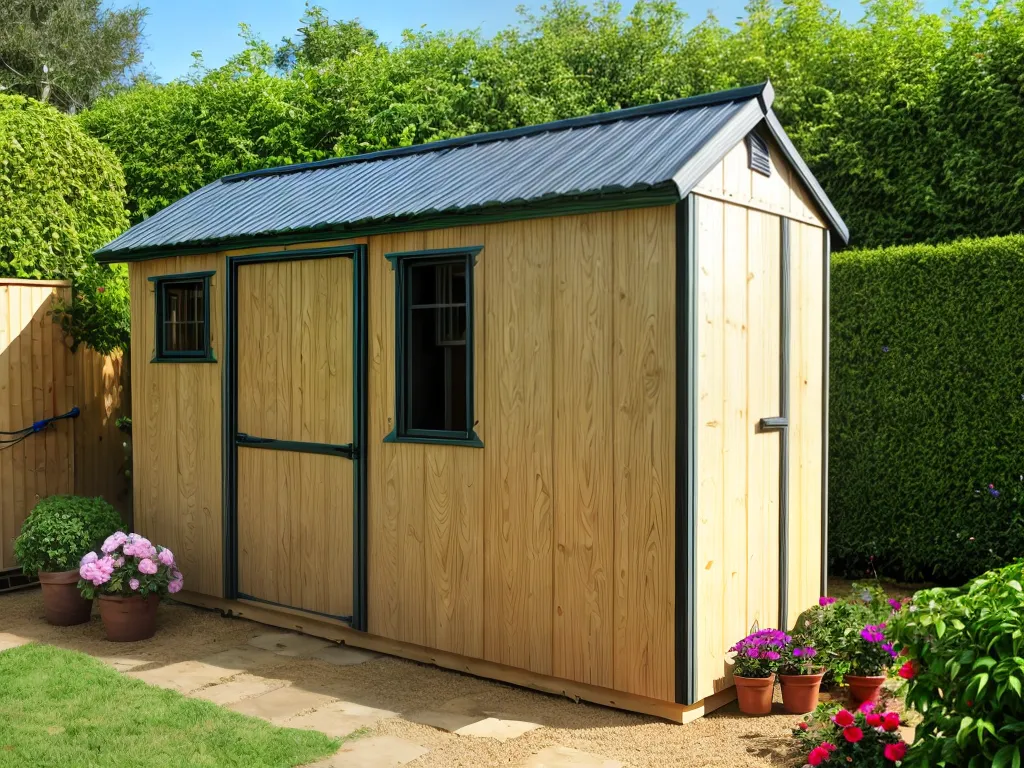
Understanding Basic Electrical Wiring For Your Garden Shed
Installing electrical wiring in your garden shed can seem daunting, but with some basic knowledge of electrical systems, you can safely and successfully wire your shed to code. Here's a beginner's guide to shed wiring to help you get powered up.
Planning Your Shed's Electrical Layout
The first step is deciding what you'll need to power in your shed and planning out your electrical layout. Consider the following:
-
Lighting - Most sheds need at least one overhead light. Think about where you'll need task lighting as well, like over a workbench.
-
Outlets - Plan outlets for power tools, chargers, or other corded devices. Put them at counter height for convenience.
-
Major appliances - If you'll have a refrigerator or other major appliances, calculate their power needs.
-
Heating and cooling - Will you need an air conditioner, heater, or fan? Factor these into your electrical plan.
-
Future expansion - Leave room to add circuits later if your needs change. Conduit makes this easier.
Also think about safety issues like ground fault circuit interrupters (GFCIs) near water sources and abrasion protection for wires running through studs.
Calculating Electrical Load
Figure out the total amps your planned circuits will need to handle. Add up the amperage of all lights, outlets, and appliances on each circuit. Compare this to the amp capacity of standard wiring sizes:
- 15 amp circuits for lighting and outlets
- 20-30 amp circuits for major appliances
For continuous loads like fridges, reduce the amp capacity by 20%. Leave room for expansion too. It's better to oversize wiring than undersize it.
Choosing Wiring and Conduit
Pick the wiring gauge that meets your electrical load needs:
- 15 amp circuits: Use #14 AWG copper wire
- 20 amp circuits: Use #12 AWG copper wire
- 30 amp circuits: Use #10 AWG copper wire
Conduit protects wires and makes wiring easier. Common types are:
- PVC - inexpensive but can be brittle
- LFMC - flexible metallic conduit
- EMT - sturdy electric metallic tubing
Match conduit to your skill level and budget. PVC is easy for DIYers to work with.
Installing the Main Power Feed
The main power feed brings electricity from your house panel to the shed's subpanel. Follow these steps:
- Run conduit from the house to the shed's location. Buried PVC works well.
- Fish the conductors through the conduit: neutral, ground, and usually 2 hot wires.
- Install a grounding rod at the shed.
- Mount the subpanel according to code requirements. Include main disconnect switch.
- Connect the feed wires: neutral to neutral bar, grounds to ground bar, hots to circuit breakers.
Size the main feed conductors for 30% more capacity than your planned load.
Branch Circuits for Lights and Outlets
With your subpanel set up, you can start wiring branch circuits:
- Plan circuits for lighting, outlets, and appliances. Group compatible loads.
- Run conduit and cables from subpanel to circuits. Use 14 AWG for 15A circuits, 12 AWG for 20A.
- Follow National Electrical Code (NEC) requirements for wire gauge, box fill, etc.
- Use GFCIs as needed for wet areas, exterior lights, outlets, etc.
- Label all wires and terminals clearly.
- Make ground connections with pigtails. Don't daisy chain.
- Use cable clamps and straps to secure cables.
Take it slow and double check your work. Getting inspections at rough-in can catch issues early.
Finishing Touches
Finally, wrap up your shed's wiring with these steps:
- Install covers on boxes and seal outdoor conduit ends.
- Connect hardwired appliances if included in your plan.
- Replace fuses or reset breakers.
- Turn power on and test all lights, outlets, and equipment.
- Install light bulbs and covers.
- Bond metal parts like railings or water pipes as needed.
Check your local codes for any final steps before energizing your shed's new electrical system. Now relax and flip that light switch - you did it!